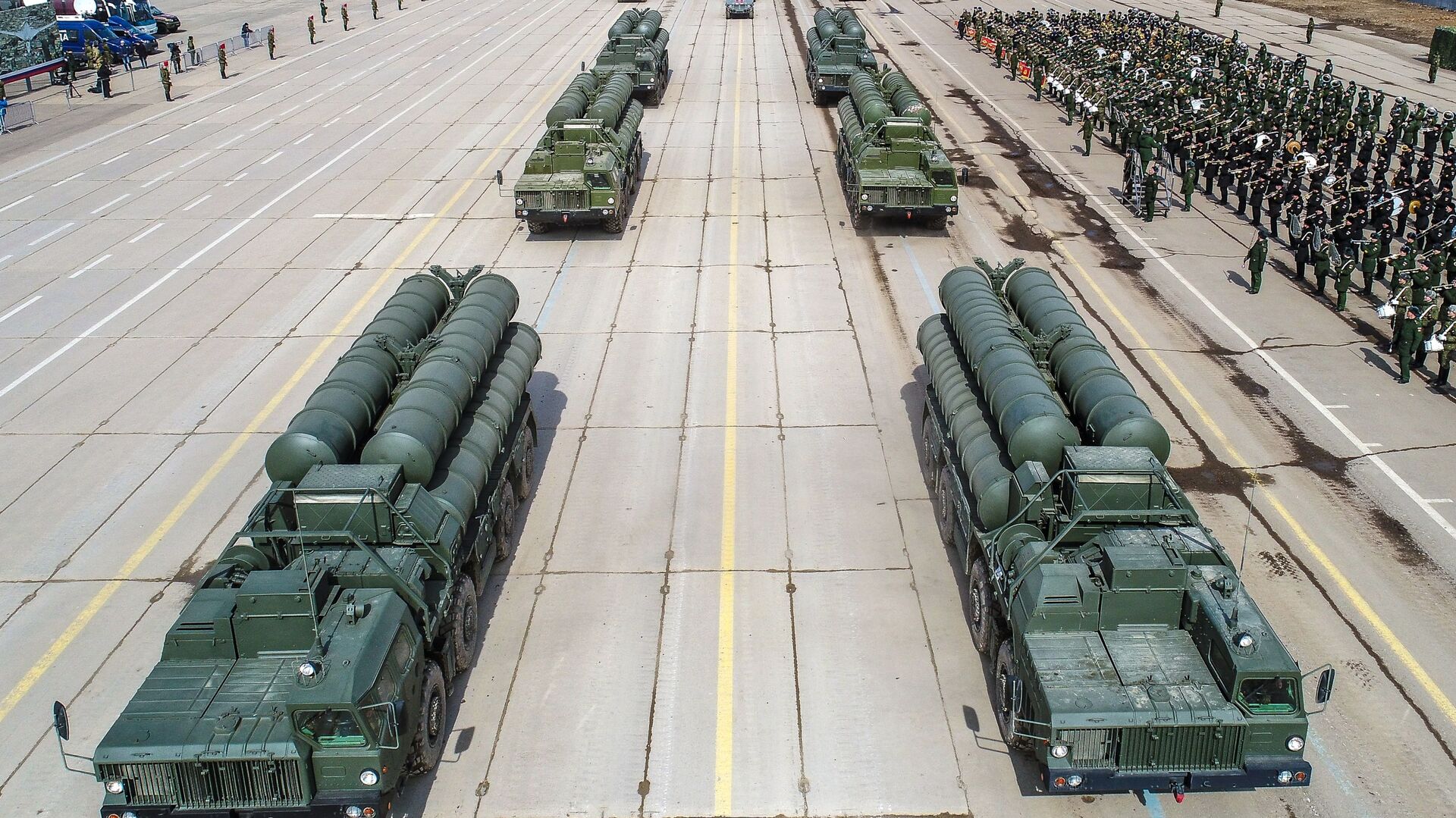How India & Russia Are Changing Global Air Defence Landscape

© Sputnik / Alexey Kudenko
/ Subscribe
Recent conflicts, including the ongoing clash between Russia and Ukraine, the Middle East Crisis, featuring tit-for-tat strikes by Israel and Iran, and the India-Pakistan military confrontation, have underlined the importance of having a robust air defence shield.
India and Russia are fast changing the global air defence landscape with world-class systems like the Akashteer, S-500, and S-400, experts have said.
The importance of having an all-encompassing weapons platform that can neutralise aerial threats with almost 100 percent precision was once again highlighted by this month's air duel between India and Pakistan, which showcased that a robust aerial defence network can prevent large-scale destruction, both in civilian areas and defence facilities.
Notably, India downed almost all the Pakistani Unmanned Aerial Vehicles (UAVs), Unmanned Aerial Combat Vehicles (UCAVs), and missiles, estimated to be in the range of 800-1000, with the help of a slew of air defence systems, S-400, Akash missile system, and the Barak-8, included.
In addition to these weapons platforms, the Akashteer air defence system earned wholesome praise from all quarters for its splendid performance during Operation Sindoor.
"Akashteer offers a unified, real-time air picture accessible to all participating units—including the control room, radars, and defense guns—facilitating coordinated and effective air defense operations," the Indian Ministry of Defence (MoD) described.
For the uninitiated, Akashteer has integrated the Indian Army's air defence system, ensuring "seamless integration of ground-based, airborne and space systems", as per the Indian Air Force (IAF).
The Akashteer system is part of the umbrella that forms the larger C4ISR (Command, Control, Communications, Computers, Intelligence, Surveillance, and Reconnaissance) or the Integrated Air Command and Control System (IACCS) framework, functioning in sync with other systems, like the S-400, Akash missile system, and the Barak-8 Medium Range Surface-To- Air Missile (MRSAM) System, in addition to legacy platforms like the Pechora and and OSA-AK.
Also called the "Guardians Of The Sky", the IACCS gave India a considerable upper hand over Pakistan during Operation Sindoor.
Interestingly, India has already begun developing a next-generation air defence network, codenamed Raksha Kavach. The two main components of Raksha Kavach are said to be surveillance and neutralisation.
"The surveillance component is set to leverage a wide variety of platforms, such as surveillance drones, satellites, long-range radars, and early warning systems, to intercept threats," Group Captain (Retd) Uttam Kumar Devnath told Sputnik India.
The neutralisation segment would have both soft-kill and hard-kill features. Its hard-kill component has a host of assets like missiles, artillery, and laser-based energy weapons - all integrated into a single control centre for lightning quick and deadly response.
"Furthermore, under a programme named Project Kusha, India is also developing an indigenous variant of the Russian S-400 air defence system, whose prototype is to be unveiled later next year. Once it is tested and local production begins, paving the way for the IAF to have a strong numerical strength of such systems, essentially pairing them with the original S-400s acquired from Russia," the IAF veteran stressed.
On the other hand, Russia's multi-layered air defense system is believed to be the most advanced at present. Often it has earned rich plaudits for its sophistication, versatility, and capabilities. Essentially, Russia deploys the S-500, S-400, S-300, alongside the Pantsir and Tor systems to tackle a range of aerial threats.
The prime reason contributing to Russia's mastery of air defence systems is its long history of success against Western attacks, including from Israel, noted Lt. Gen. Aytech Bizhev, former Russian Air Force deputy commander of the CIS Joint Air Defense System.
"Traditionally, the Soviet Union has helped its fraternal countries in almost all wars waged by American imperialism, either helping or directly participating. Well, I can give examples such as how air defense systems repelled Israeli air strikes in the Middle East in 1971-72, in Lebanon, 1985, and Vietnam," Bizhev underscored.
That is, the air defense systems of the Soviet Union and Russia participated in all local wars. Naturally, crystallization took place, selection of air defense, experience, and science of air defense of large territories and objects, such as the Soviet Union and the Russian Federation. Extensive borders, airspace, and unlimited borders - all this had to be protected, guarded, and it was necessary to build an air defense system, the military analyst added.
It was organized differently in different years. During the Great Patriotic War, such large cities as Moscow and Leningrad suffered little from air attack. That is, the effectiveness was always very high, he pointed out.
"If one evaluates anti-aircraft missile systems, they can be divided into two stages: 1) Air defense of ground forces, highly mobile air defense systems that cover troops on the battlefield. 2) Large air defense, which covers strategically important administrative facilities. In the field, the S-300, S-400, S-500 family of anti-aircraft missile systems - they have no equal in the world now," Bizhev observed.
The Russian Federation's air defense is the most modern, the most high-tech, the most all-weather, deeply echeloned, and can carry out the assigned task at any time, according to the former Russian Air and Space Force official.
All Russian systems operate in a single information field, he mentioned.
Of course, you won't shoot at light aircraft with the S-300 system. Somewhere, there are Buk, Pantsir, Tora systems, and so on. Therefore, everything depends on the means of attack. Russia has an answer to every threat, Bizhev concluded.


